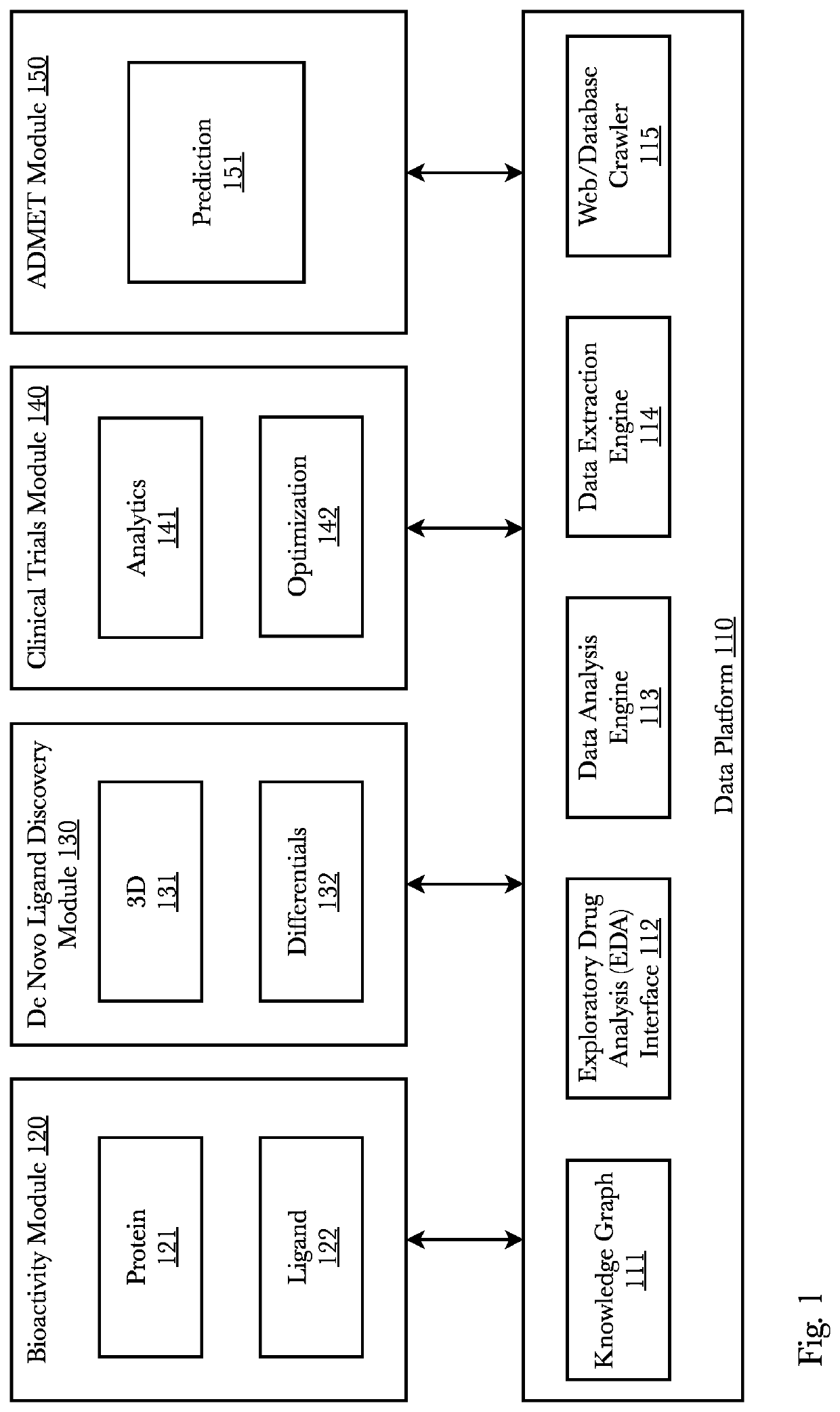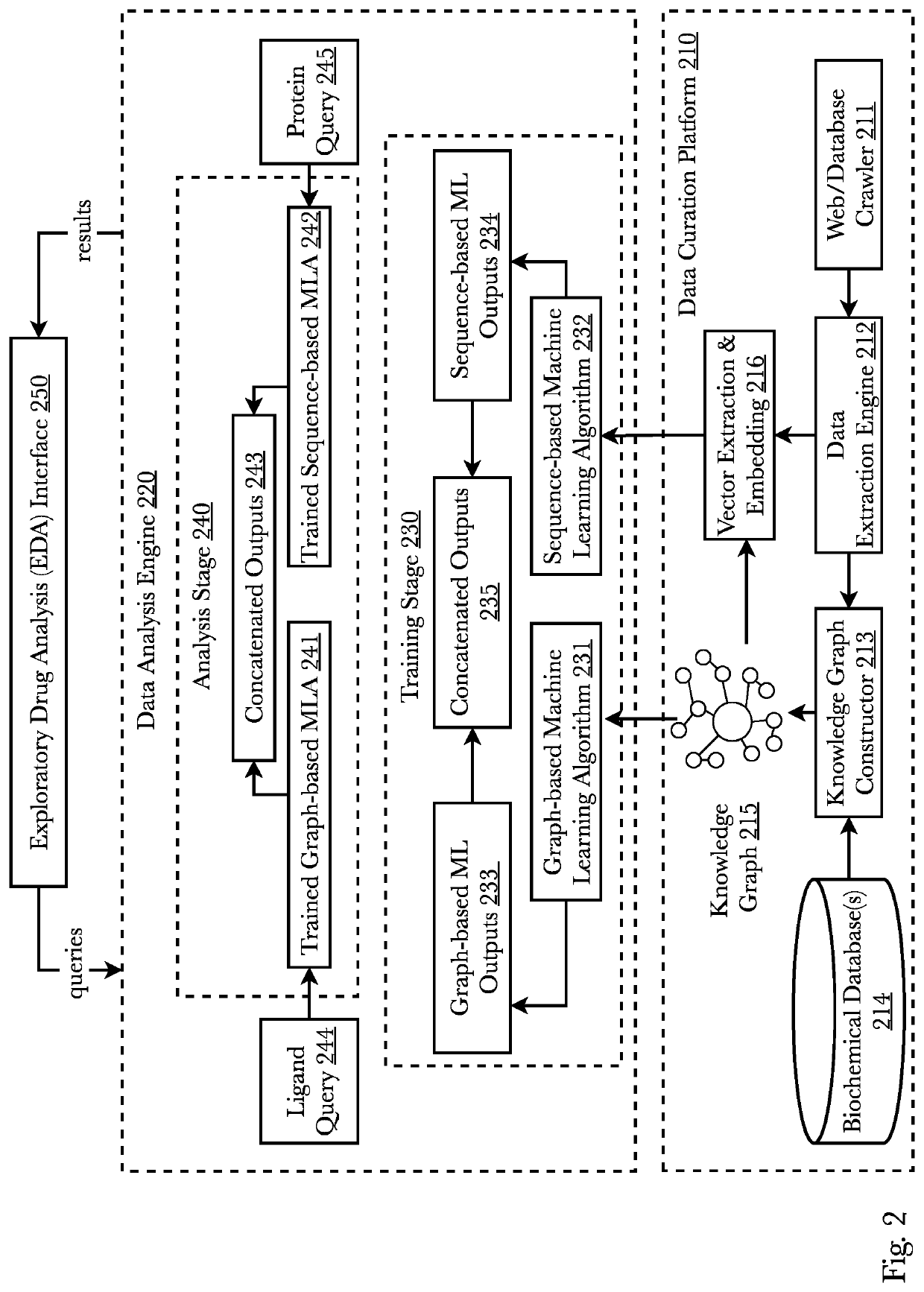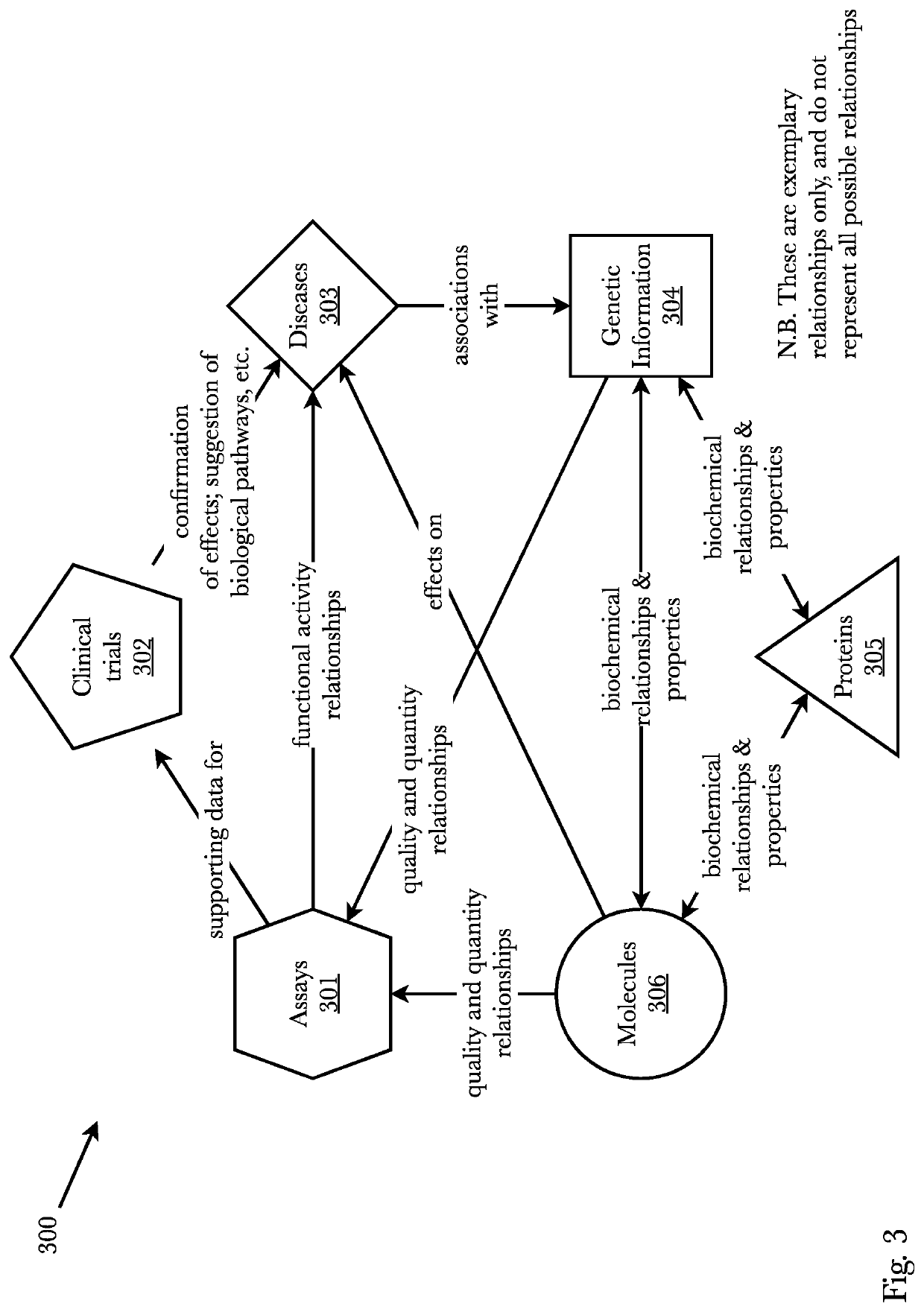System and method for molecular reconstruction from molecular probability distributions
a probability distribution and molecular technology, applied in the field of medical research, can solve the problems of ligands further complicating the issue, affecting the final shape of proteins, and reducing the computational complexity of protein-ligand interactions,
- Summary
- Abstract
- Description
- Claims
- Application Information
AI Technical Summary
Benefits of technology
Problems solved by technology
Method used
Image
Examples
Embodiment Construction
[0069]Accordingly, the inventor has conceived and reduced to practice, a system and method comprising a transmoler that identifies common substructures of a given 3D conformer and predicts its structural information. First, based on contrastive learning, substructure embeddings are learned in an unsupervised manner. Secondly, a novel oriented 3D object regressor predicts the dimensions and directions of each substructure in a conformer as well as its fingerprint embedding which are used to create differentiable junction tree molecular graphs. Lastly, using the junction tree graphs, molecular representations—such as DeepSMILES, as one example—are generated which represent new and novel molecules. The system may also generate conformers directly from a pocket. A pocket may be input to the model and the model learns to generate structures which can fit that pocket by conditioning the generative system. Furthermore, structure-based contrastive embeddings generated for transmoler can be ...
PUM
 Login to View More
Login to View More Abstract
Description
Claims
Application Information
 Login to View More
Login to View More - R&D
- Intellectual Property
- Life Sciences
- Materials
- Tech Scout
- Unparalleled Data Quality
- Higher Quality Content
- 60% Fewer Hallucinations
Browse by: Latest US Patents, China's latest patents, Technical Efficacy Thesaurus, Application Domain, Technology Topic, Popular Technical Reports.
© 2025 PatSnap. All rights reserved.Legal|Privacy policy|Modern Slavery Act Transparency Statement|Sitemap|About US| Contact US: help@patsnap.com



